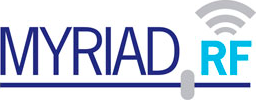The Ethernet interface in NET Hamlib rigctl was a way to make the LimeSDR respond to commands without modifying code of those applications that already include Hamlib. Or in other words, keeping the interface simple and adaptable to future changes. (or this)
Here, there will be future software updates to OpenHPSDR-PowerSDR, openHPSDR Ethernet Protocol version and the LimeSuite API.
This is UDP over Ethernet. The first documents I found when searching for Hermes Protocol where the wrong ones to look at.
